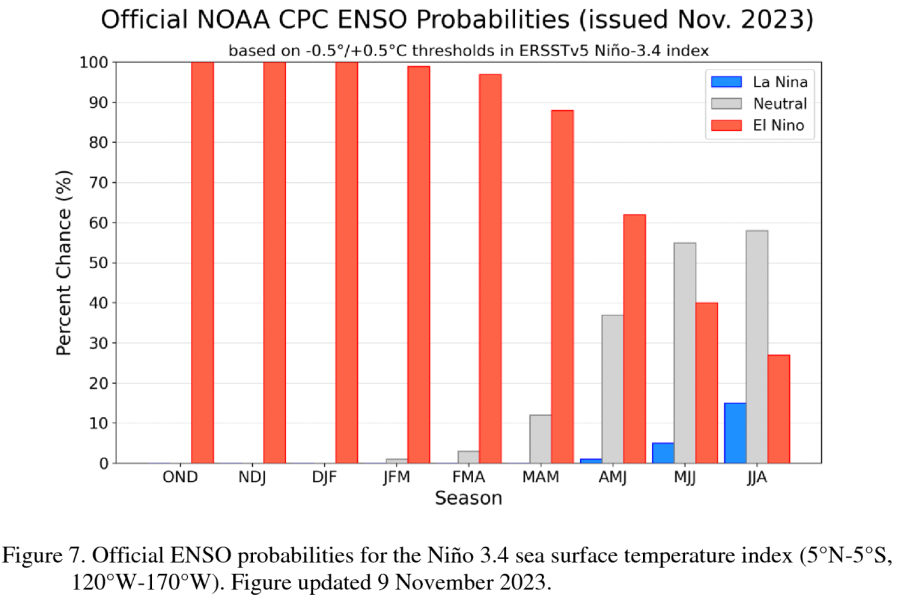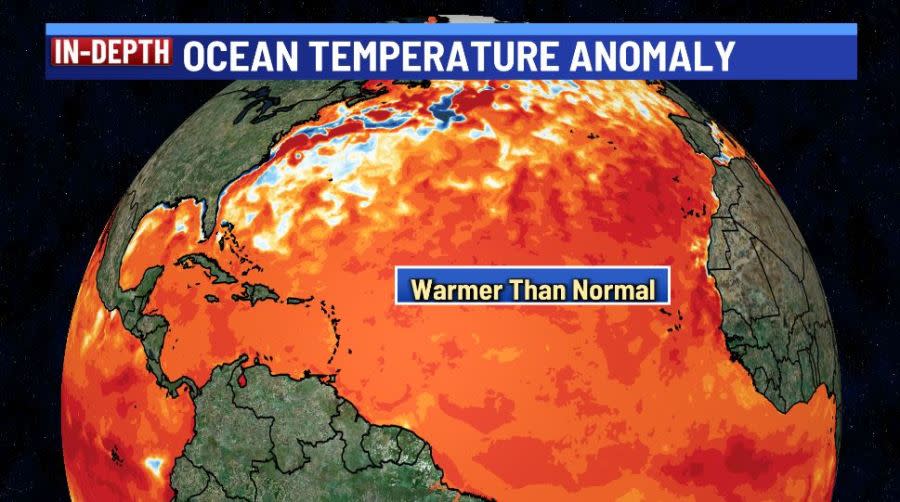Busy Atlantic hurricane season ends with 20 storms

AUSTIN (KXAN) — The beginning of December marked the end of the Atlantic hurricane season for 2023. In total, there were 20 named storms, including an “Unnamed Storm” that was posthumously determined to have needed a name. According to NOAA, this makes the 2023 Atlantic hurricane hurricane season the 4th busiest on record.
Of the 20 named storms, seven became hurricanes, and three were major Category 3 hurricanes or greater.
A typical Atlantic hurricane season has 14 named storms, seven hurricanes and three major hurricanes.
Hurricane Idalia was the only landfalling storm to strike the United States as a hurricane during the 2023 season. That storm was a Category 3 storm at landfall in late August near Keaton Beach in Florida. According to a NOAA news release, storm surge reached 7-12 feet of inundation.
Ophelia made landfall in North Carolina as a tropical storm in late September on Emerald Isle. Heavy rain, river and storm surge flooding were reported in some areas with that storm.
Hurricane Lee, while it didn’t make landfall in the United States, did cause significant power outages in Maine on its way to landfall as a post-tropical cyclone in Nova Scotia, Canada, in mid-September.
El Niño typically leads to an Atlantic hurricane season with slightly below normal activity, but the incredibly warm Atlantic surface water temperatures likely helped to offset any mitigating impacts caused by wind shear induced by El Niño.
Eastern Pacific basin
More in line with a typical El Niño summer, the Eastern Pacific basin had more storms than normal, with 17.
Of the 17 named storms, 10 became hurricanes, and eight were major Category 3 hurricanes or greater!
A typical Atlantic hurricane season has 15 named storms, eight hurricanes and four major hurricanes. Based on named storms, 2023 will go down as a slightly busier than normal hurricane season.
The strongest storm in the basin was the rapidly intensifying and poorly forecast Hurricane Otis, which devastated parts of Acapulco, Mexico, in late October as a Category 5 storm with sustained winds up to 165 mph! This storm will enter the record books as the strongest landfalling hurricane in the eastern Pacific.
Central Pacific basin
The Central Pacific was close to normal with four named storms. A typical season typically has 4-5 named storms.
Hurricane Dora, while staying south of Hawaii, caused strong winds that helped quickly spread wildfires over parts of the island of Maui in August.
Looking ahead: 2024 Atlantic Hurricane Season
While it’s much too early to get specific on the forecast for NEXT year, we can look at two factors right now. The phase of ENSO or El Niño Southern Oscillation can have a notable influence on how active the Atlantic Hurricane Season can be, but as we saw this year, it’s not the only factor. Currently, the Climate Prediction Center is expecting the return of a “neutral” phase of ENSO. If El Niño years usually mean fewer named storms and La Niña years usually mean more named storms, ENSO Neutral doesn’t really tilt the scale in one direction or another.

Sea surface temperatures in the Atlantic may be one of the other significant factors to watch for next year.

There’s still a lot that can change over the next few months, but a warmer Atlantic (more red) would seem to tilt the scale toward another busy hurricane season. Stay tuned…
For the latest news, weather, sports, and streaming video, head to KXAN Austin.

